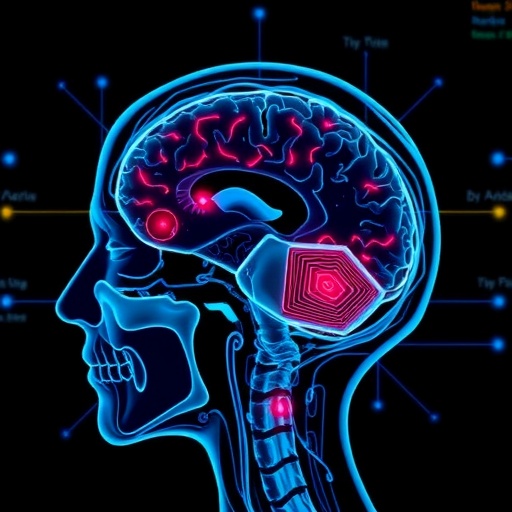
Credit: Mary Ann Liebert, Inc., publishers
New Rochelle, NY, June 26, 2017–Researchers compared the thickness of brain cortex in patients with brain tumors before and after radiation therapy was applied and found significant dose-dependent changes in the structural properties of cortical neural networks, at both the local and global level. These alterations and the finding of increased segregation of brain regions essential for thought function may have a role in the delayed cognitive impairment experienced by many patients after brain radiotherapy. This new research is reported in Brain Connectivity, a peer-reviewed journal from Mary Ann Liebert, Inc., publishers. The article is available free on the Brain Connectivity website until July 26, 2017.
In the article entitled "Altered Network Topology in Patients with Primary Brain Tumors after Fractionated Radiotherapy," Naeim Bahrami, Carrie McDonald, and coauthors from the University of California San Diego, used MRI imaging to estimate cortical thickness across multiple brain regions. The results demonstrated that radiotherapy to one region of the brain that led to cortical thinning could affect the thickness of other brain regions that are structurally and functionally connected. These global network effects included decreased interactivity and integration of cortical subnetworks, and changes in the distribution of major network hubs in the brain, which are critical for cognitive processing.
"It has been an open scientific question as to whether radiation therapy causes atrophy to brain cortex," states Christopher Pawela, PhD, Editor-in-Chief of Brain Connectivity. "Dr. Bahrami and colleagues have performed an elegant study in which they were able to link structural neurodegenerative changes in cortex to variations in network connectivity between brain regions. Their work provides insights on a possible mechanism of how radiotherapy degrades healthy brain tissue outside the tumor region leading to post-therapeutic cognitive decline."
###
Research reported in this publication was supported by the National Institutes of Health under Award Numbers R01NS065838, UL1TR000100, and KL2TR00144. The content is solely the responsibility of the authors and does not necessarily represent the official views of the National Institutes of Health.
About the Journal
Brain Connectivity is the essential peer-reviewed journal covering groundbreaking findings in the rapidly advancing field of connectivity research at the systems and network levels. Published 10 times per year in print and online, the Journal is under the leadership of Founding and Co-Editors-in-Chief Christopher Pawela, PhD, Assistant Professor, Medical College of Wisconsin, and Bharat Biswal, PhD, Chair of Biomedical Engineering, New Jersey Institute of Technology. It includes original peer-reviewed papers, review articles, point-counterpoint discussions on controversies in the field, and a product/technology review section. To ensure that scientific findings are rapidly disseminated, articles are published Instant Online within 72 hours of acceptance, with fully typeset, fast-track publication within 4 weeks. Complete tables of content and a sample issue may be viewed on the Brain Connectivity website.
About the Publisher
Mary Ann Liebert, Inc., publishers is a privately held, fully integrated media company known for establishing authoritative medical and biomedical peer-reviewed journals, including Journal of Neurotrauma and Therapeutic Hypothermia and Temperature Management. Its biotechnology trade magazine, GEN (Genetic Engineering & Biotechnology News), was the first in its field and is today the industry's most widely read publication worldwide. A complete list of the firm's 80 journals, newsmagazines, and books is available on the Mary Ann Liebert, Inc., publishers website.
Media Contact
Jennifer Gatti
[email protected]
914-740-2149
@LiebertPub
http://www.liebertpub.com
Original Source
http://www.liebertpub.com/global/pressrelease/new-study-describes-changes-to-structural-brain-networks-after-radiotherapy-for-brain-tumors/2206/ http://dx.doi.org/10.1089/brain.2017.0494
############
Story Source: Materials provided by Scienmag




